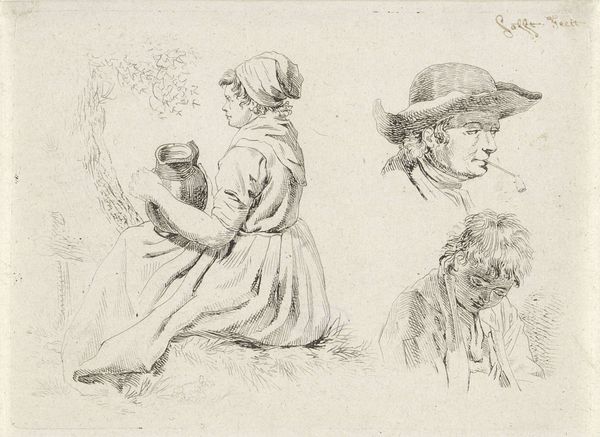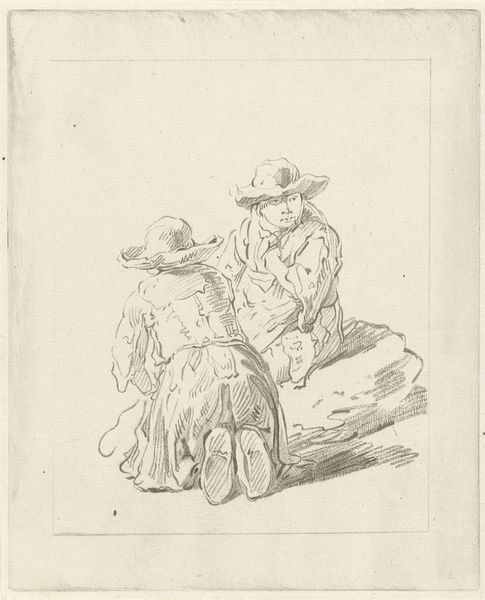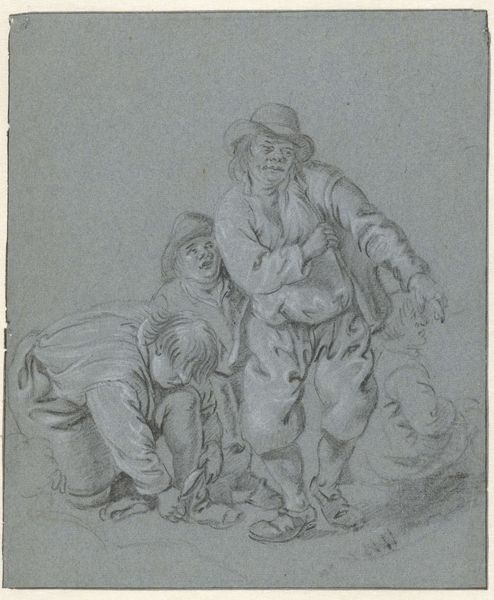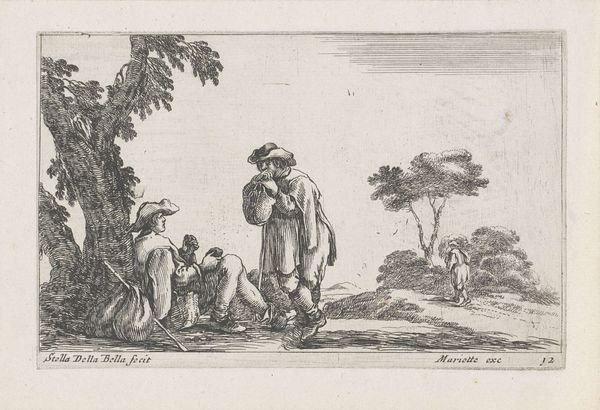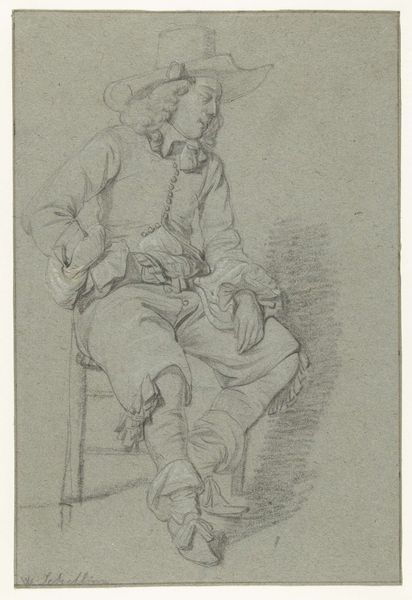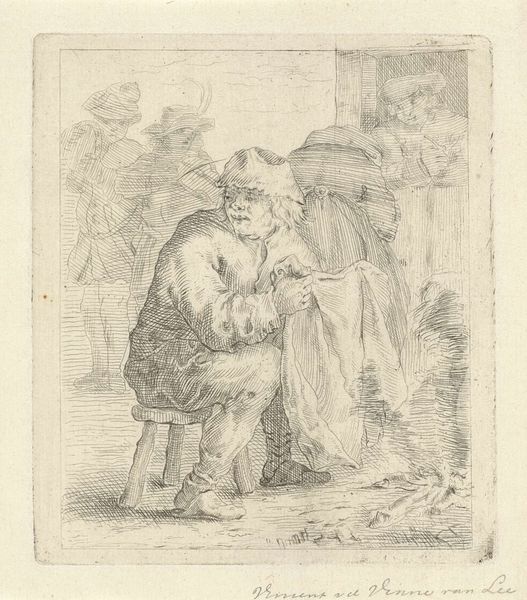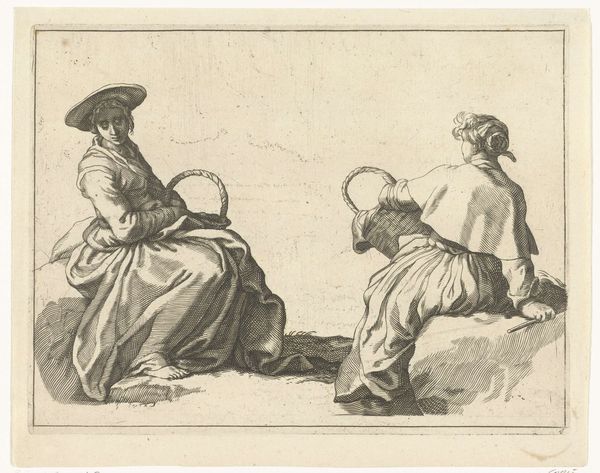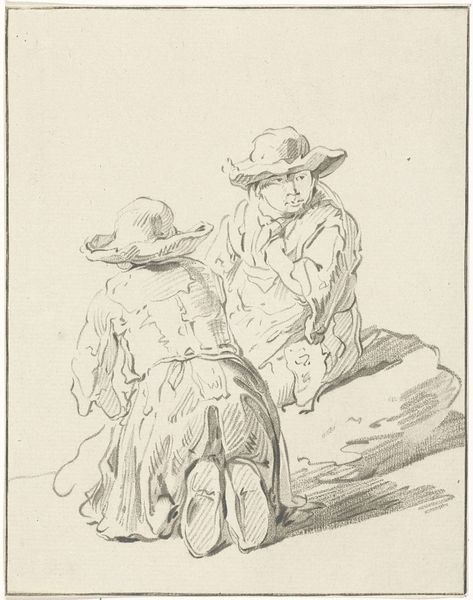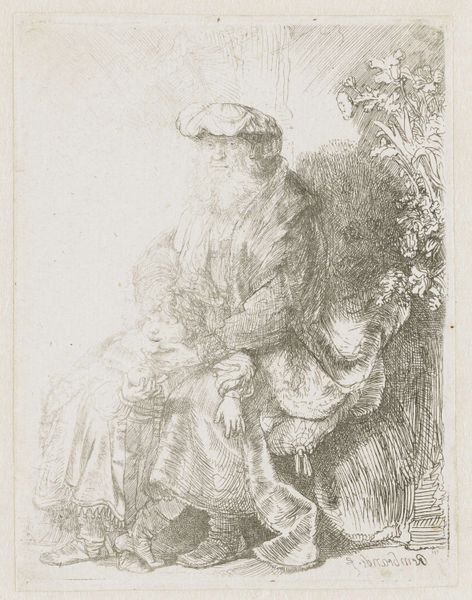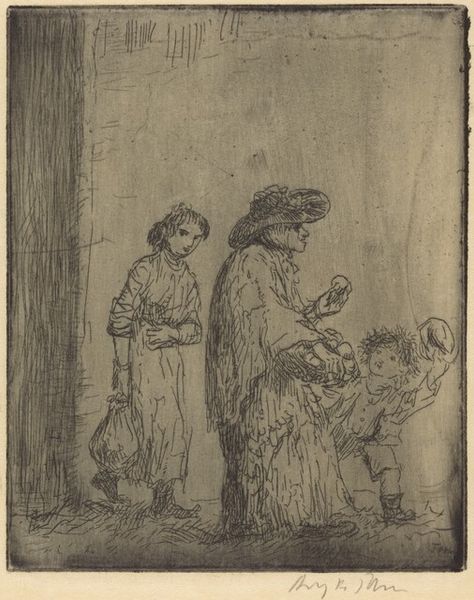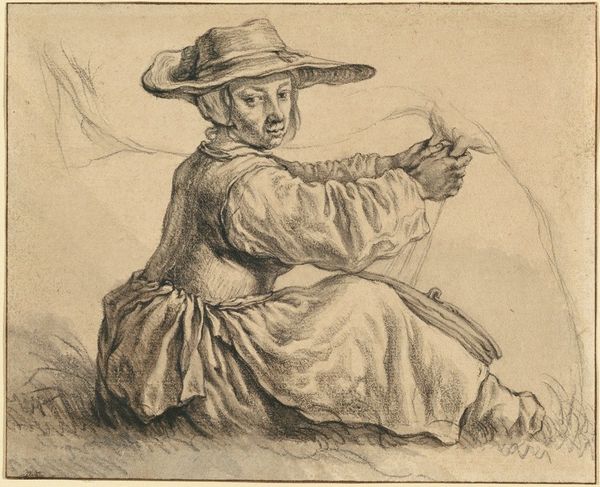
Zittende vrouw met schenkkan, portret van een man met pijp en een jongen 1788 - 1849
0:00
0:00
drawing, print, etching
#
portrait
#
drawing
# print
#
etching
#
old engraving style
#
figuration
#
pencil drawing
#
genre-painting
Dimensions: height 108 mm, width 151 mm
Copyright: Rijks Museum: Open Domain
Editor: Here we have "Zittende vrouw met schenkkan, portret van een man met pijp en een jongen" created by Johan Christiaan Willem Safft between 1788 and 1849. It's a drawing and print, specifically an etching. I am struck by the arrangement; it's almost like three separate studies on one plate. What stands out to you? Curator: Immediately, the composition commands attention. We see a seated woman juxtaposed with the portrait of a man and a boy. Observe the deliberate placement, seemingly disconnected, yet unified by the linear quality of the etching. Notice how Safft’s precise mark-making generates form. Do you see how the hatching defines the volume? Editor: I do, particularly on the woman's dress. It seems almost sculptural. And is it typical to combine studies like this? Curator: Convention is a consideration. What strikes me is how Safft used line weight and density to create emphasis. The texture becomes a language, no? The negative space surrounding each figure isolates them, allowing us to examine their forms individually before considering their collective existence on the plane. Editor: That’s interesting. So even the emptiness contributes to the meaning. I hadn't thought about it that way. Curator: Indeed! Etching affords precise control. Notice the fine detail, consider the relationship between foreground and background. It all affects the unity. Have you examined the relationship of tone and light to line? It's all about achieving a synthesis. Editor: I will pay closer attention to this the next time I see an etching. Thanks for pointing out how the linear qualities create depth and character. Curator: I am pleased to shed some light on it. We often overlook how a work, so straightforward on the surface, speaks to artistic concepts, with intentional mark-making and tonal qualities.
Comments
No comments
Be the first to comment and join the conversation on the ultimate creative platform.
